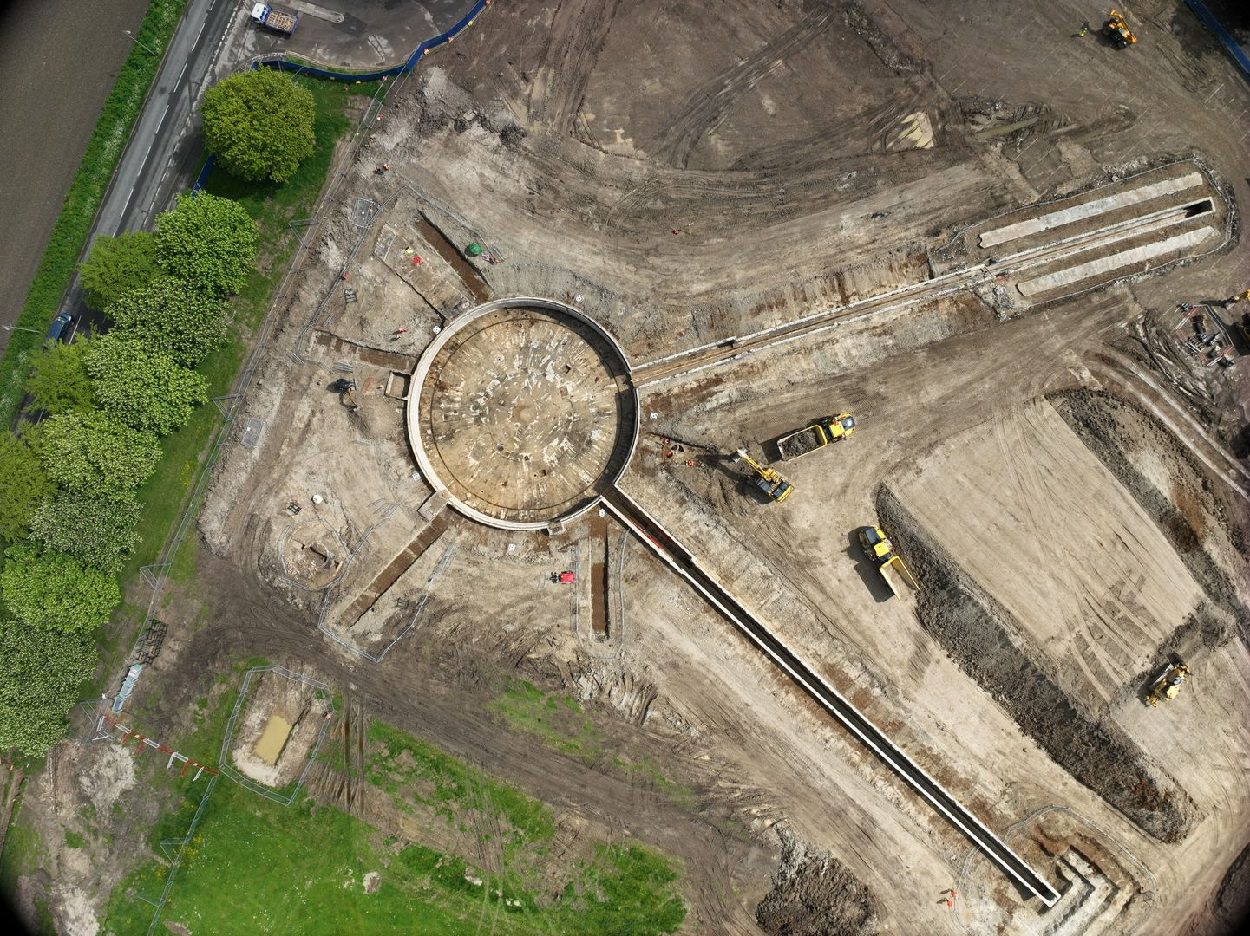Archaeologists from MOLA (Museum of London Archaeology) have excavated an experimental WWII prototype catapult at Harwell in Oxfordshire, England.
Named the Royal Aircraft Establishment (RAE) Mark III Catapult, the system was developed to rapidly catapult bomber planes into the air over shorter runways.
Constructed between 1938 and 1940 in Harwell, Oxfordshire, the catapult had a rotating turntable for guiding aircraft toward one of the two short concrete runways, each measuring a mere 82 metres in length. To initiate the launch, the aircraft was connected to an underground pneumatic ram via a towing hook.
Beneath the turntable, a dozen Rolls-Royce Kestrel aero engines were deployed to pressurize air to 2,000 psi, which was channelled into a pneumatic ram causing it to swiftly extend along the guided track. The result was a literal catapulting action that propelled large bomber planes into the air.
The prototype encountered various design issues, such as engine wear and a design mismatch with the intended bomber planes. The project was subsequently abandoned, and by 1941 the structure was filled in and a conventional runway built across the end of the southern arm of the catapult system.
In preparation for the development of the land, archaeologists from MOLA conducted a detailed study of the WWII relic and faithfully recreated a 3D digital replica of the remains.
Susan Porter, MOLA Project Officer, says: “This fascinating structure reminds us of the rapid experimentation and innovation of the interwar years and WWII. Crucially, recording the location and appearance of every inch means that the catapult is preserved by record for future generations.”
The team also uncovered finds from a later runway in the vicinity, including large runway lights, roughly 1m square, and a previously unknown gun emplacement that defended the runway from attack.
Once the study is completed, all the information and discoveries will be preserved in an archive, creating a lasting archival monument of this unique relic from the early days of WWII.
Header Image Credit : MOLA





